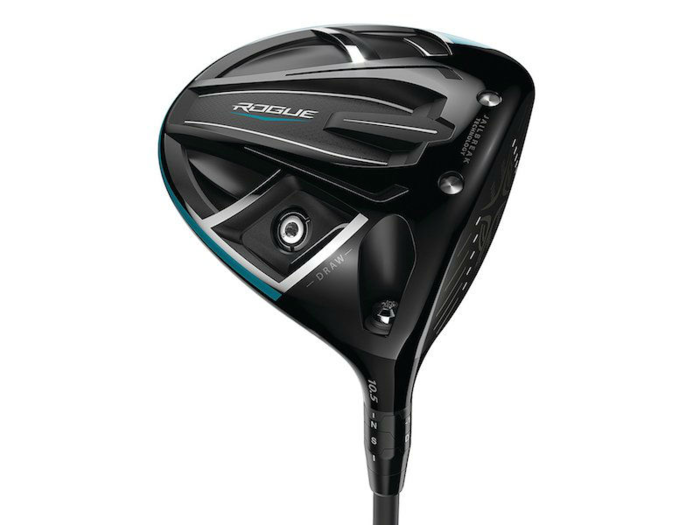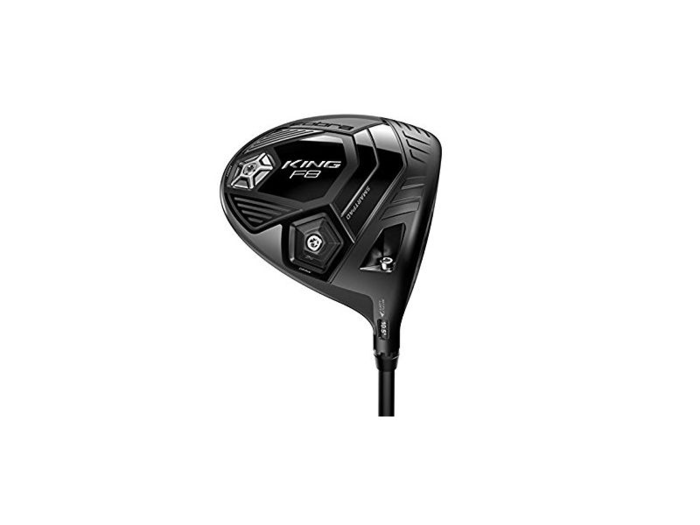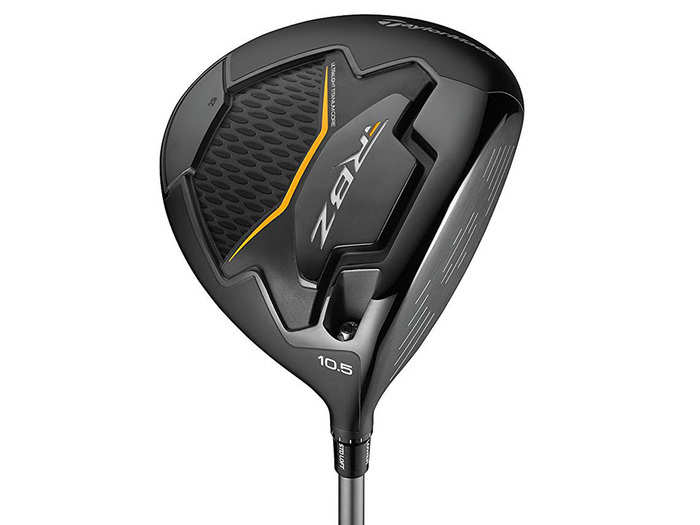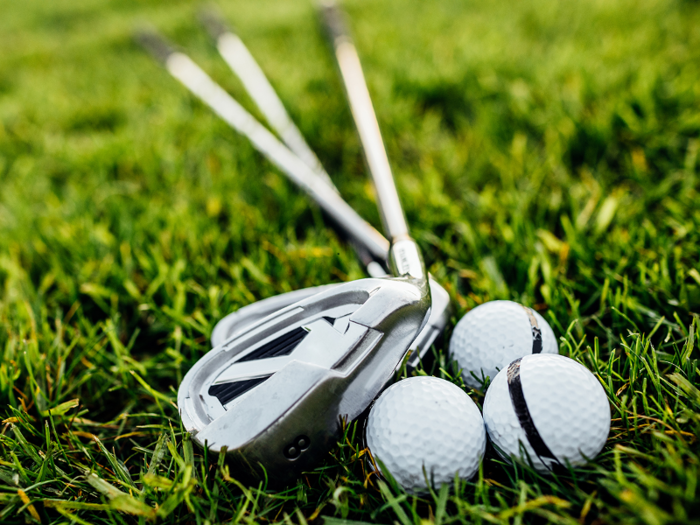- Home
- slideshows
- miscellaneous
- The best golf drivers
The best golf drivers
The best driver overall

The best driver for fixing a slice

If you've never sliced a golf shot … well, you've probably never played golf. Few things are as frustrating in the game. Sure, you hate leaving that 4-footer for birdie short, but at least you made two or three great shots to put yourself in that position.
The sliced drive almost always means you're in huge trouble off the tee, and you're in for a long, frustrating hole. Callaway's Rogue Draw driver is good at minimizing the negative effects of a slice.
A slice occurs when the face of the driver doesn't strike the ball squarely. Instead, the heel of the club face is ahead of the toe, leaving the club "open" and causing the ball to leave the driver's face with a side spin. For a right-handed golfer, this spin causes the ball to travel violently from left to right as it goes down the fairway, almost certainly leaving you in the rough, trees, or water hazard.
GolfTec says that Callaway increased the moment of inertia (MOI) across a wider section of the driver's face, giving it a more forgiving ball strike. If you strike the ball off-center with the Rogue Draw, you won't be penalized as severely as you would be with a less forgiving club face.
The Rogue Draw contains a greater amount of weight in the heel of the club versus the toe, which should slow down the heel and help you square the ball better, according to Golf Magazine.
Today's Golfer says that although you won't be able to see the slice-battling technology in the Rogue Draw, the results are clear. Its tests show that you'll receive seven yards of draw bias versus last year's Callaway Epic driver, which could mean the difference between being in the rough and being on the edge of the fairway.
The Callaway Rogue Draw driver does exactly what it promises, according to a buyer named Mr. M, making it easier to stay in the fairway off the tee.
There is also a women's version of the Callaway Rogue Draw driver available for $400.
Pros: Uses extra weight in the heel to encourage a ball strike that's more square, larger sweet spot on the club face to reduce penalty from mis-hits, looks just like a non-draw-biased driver
Cons: Extremely expensive, won't fix severe slice problems as well as changing your swing
The best adjustable driver

Having an adjustable driver may seem odd to golf purists, but golf clubs that allow you to make slight adjustments to the various parts of the club while you're on the course are becoming more popular. One of the most interesting adjustable drivers is the Wilson Staff C300 driver.
To start, you can adjust the loft and face angle of the C300 driver by using a twistable cylinder at the hosel of the club (just above the club head). You can change the loft in six different positions between minus-1 and plus-2 degrees with this cylinder.
Additionally, the C300 gives you adjustable weights in the club head. By changing the position of these weights, you can give this Wilson driver a draw bias, a fade bias, or a neutral bias for the ball flight. A draw bias causes the ball to spin slightly to the left, a fade bias spins the ball to the right, and the neutral bias reduces side spin.
You won't be able to fix significant swing problems by adjusting the position of the weights in the club head, but you will receive slightly different ball paths with changes in the location of these weights.
As Golf Magazine mentions, another interesting design feature is what the manufacturer calls Power Holes, which are filled with urethane and provide a greater flex for the club face at impact, which increases the size of the sweet spot.
The C300 driver has a great looking shape and a rich red color on the top of the club. The C300's matte finish reduces sun glare, too.
Golfers who have a high swing speed rate will receive the greatest benefit from the Staff C300 driver, according to Golfalot. However, high handicap players with slow swing speeds probably won't receive much distance benefit from this driver, making it tough to justify its high price point.
Because of the low spin rate this club delivers off the face, golfers will receive extra forgiveness for off-center ball strikes, according to The Hackers Paradise.
With a heavier swing weight than some other Wilson drivers, one buyer named DJ179 says controlling the Staff C300 is an easier process.
Pros: Highly adjustable driver for changing the club face's loft and weight positioning, red matte finish on the top of the driver reduces glare, slow spin rate delivers forgiveness for off-center ball strikes
Cons: High price point, high handicap players who have slow swing speeds won't generate extra distance
The best driver for swing forgiveness

A redesigned clubface versus previous versions of Cobra King drivers gives the F8 a more forgiving contact point, which will help mid and high handicap golfers keep their drives in the fairway more often.
Cobra's designers have spent a lot of time designing the clubface on the F8, creating a titanium face that's 10% lighter than in past versions. According to Golfalot, this helps less experienced golfers generate more swing speed.
One buyer named Jim R says the King F8 provides him with 20-25 yards of distance improvement over his previous driver.
The precise milling and design of the titanium face insert also deliver a slight curvature, which ensures the Cobra driver maintains better exit speed on mis-hits, as well as a better launch trajectory, according to Golf Digest. This helps the mid-to-high handicap golfer gain better distance on mis-hits.
And the milling pattern on the face of the Cobra King F8 looks great, too, which makes this driver enjoyable to carry in the bag and use.
However, as Golf Monthly points out, this pattern on the clubface could be distracting for some players. Additionally, it says the improvements in the F8 versus previous versions will come in better accuracy, rather than in better distance, which some players won't like.
You can also get a women's version of the Cobra King F8 driver for $200.
Pros: Thinner and lighter clubface helps the golfer generate more club speed, slight curve to the face of the club delivers more forgiveness for mis-hits, emphasizes accuracy over distance improvements
Cons: High price point, pattern on the milled clubface may be distracting for some golfers
The best affordable driver

New-fangled clubs have a lot of components. Built cheaply, they're just more things to have fall apart, so we recommend you go with something simple by a brand that's been around for a while if you're on a budget.
Yes, shelling out upwards of $400 or $500 for a driver can be a painful endeavor. A lot of us forego the driver altogether, perhaps in part because of the cost. If you're working on transitioning from a three-wood or three-iron, but not quite ready to drop serious scratch on one, you could do far worse — and spend far more — than TaylorMade's RBZ Black driver. Read more on the finer points of clubs to use at the tee over at The Sandtrap's forum on the subject.
The RBZ might not have all the finishings of TaylorMade's pricier clubs, but it does have the stock shaft and the same craftsmanship behind it, and if you're slicing every other drive off into the woods with this club, you'll have no one (or thing) to blame but yourself. Sorry, but that's golf, and this club 460cc clubhead is more than sufficient for tackling even the most doggedly doglegged par five this earth has to offer.
Golf Influence praises TaylorMade's RBZ Black for being less than half the price of the brand's other drivers as well as the simplicity of its design and lightweight titanium head.
Nearly 100 Amazon reviews round out to an impressive 4.6/5-star rating, and many of which are lengthy odes to the accuracy and performance of this piece for the price.
Available with all the basic orientations, flex levels, and configurations, this is a simple but sleek stick worth having, either for backup or a first driver.
Pros: Calloway craftsmanship, price
Cons: Slightly heavier than pricier clubs (but still titanium), no fancy bells or whistles (but who needs those anyhow?)
What to look for in a driver

There are a few key features you will want to consider when looking to buy a driver. The most important features for you will depend on how you play. As Golf Digest says, the number of ways to personalize your driver to match your game has never been greater.
- Club head size. Manufacturers measure the size of the driver in the volume of the club head. Golf's rules limit a club head to 460 cubic centimeters (cc). These clubs give golfers a large sweet spot, minimizing the effect of mis-hits and providing maximum distance.
- Club head weight. Most modern drivers range between 265 and 310 grams in weight of the club head, according to Dick's Sporting Goods. A lighter driver allows you to generate a higher club head speed, which results in better distance. Stronger players can use a heavier driver without losing club head speed, generating even more distance.
- Shaft length. The maximum length of a driver allowed in golf's rules is 48 inches. However, most companies will stick with a shaft length between 43 and 46 inches. Shorter shafts are a bit easier to control, but you do have to sacrifice some distance versus a longer shaft.
- Club loft. The loft of the driver is the measurement of the angle of the club face when it's sitting on the ground. A driver with a loft of fewer than 10 degrees will result in lower shots, while greater than 10 degrees of loft gives you a higher arcing shot. Most drivers range from 8 to 12 degrees in loft, according to Ship Sticks. As a general rule, more experienced players can control low loft drivers well, while inexperienced players need a higher loft club to have more success at the expense of some distance.
- Center of gravity. The center of gravity in the driver is the point at which the driver's weight is balanced. Drivers with a center of gravity toward the back of the club will generate a little more loft with a higher backspin rate, which merges the best benefits of distance and accuracy for the average player.
- Adjustability. Many new drivers allow you to adjust the loft and center of gravity of the club while you're on the course. You'll use a twistable collar near the club head to slightly adjust the loft angle of the club face. Some club heads have removable weight slugs that you can move to different positions in the club, changing the center of gravity.
Popular Right Now
Popular Keywords
Advertisement